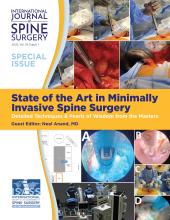ABSTRACT
Background We performed a retrospective evaluation of histological and imaging results of patients submitted to computed tomography (CT)-guided biopsy for vertebral fractures (VFs) of unknown etiology to evaluate the pathological causes of fractures and also to observe the diagnostic results of imaging studies available.
Methods We retrospectively reviewed all the CT-guided vertebral biopsies performed in our institution in the last 2 years, selecting patients with VF of unknown etiology. We reviewed clinical records, imaging studies, and histological examination results. We compared diagnostic performance of the 2 most sensitive imaging modalities for detection of malignancy on the collapsed vertebral body: magnetic resonance imaging (MRI) and positron emission tomography-CT (PET-CT). Anatomopathological results have been considered the gold standard to assess the diagnostic performance of imaging studies. Age stratification has been performed to understand the distribution of different anatomopathological diagnoses in age groups.
Results Among 282 CT-guided vertebral biopsies, 36 (12.8%) have been performed to diagnose the etiology of VF of unknown origin. In 26/32 (81.3%), the vertebral biopsy was diagnostic: 8 osteopenia, 6 multiple myelomas, 4 osteomyelitis, 2 eosinophilic granuloma, 3 metastases, 1 mastocytosis, 1 Paget's disease, and 1 dysmielopoiesis. In 6 cases, the anatomopathological diagnosis was normal bone structure, most likely excluding malignancy. There were no statistically significance differences between MRI and PET-CT results (P = 1.0000).
Conclusions Multiple myeloma and osteopenia represent the most frequent causes of this condition in adult patients, while eosinophilic granuloma and osteomyelitis in pediatric patients. Computed tomography-guided biopsy permits one to reach diagnosis in most of cases. Both PET and MRI could be insufficient to discriminate benign from malignant causes of fractures. Computed tomography-guided biopsy is needed when the etiology of fracture remains unclear.
- spinal fractures
- image-guided biopsy
- multidetector computed tomography
- osteoporotic fractures
- spontaneous fractures
Footnotes
Disclosures and COI: Author contributions: Spinnato P designed and performed the research and wrote the paper; Bazzocchi A helped in designing the research and supervised the manuscript; Facchini G and Filonzi G collected data and supervised the manuscript; Rambaldi I and Nanni C helped in designing the research and contributed to the analysis and data collection; Rimondi E collected data and supervised manuscript; Fanti S and Albisinni U supervised and approved the manuscript.
This research was conducted following the Declaration of Helsinki because of the retrospective and observational nature of the study.
Informed consent statement: Patients were not required to give informed consent to the study because the analysis used anonymous clinical data that were obtained after each patient agreed to treatment by written consent.
We have no financial relationships to disclose. Data sharing statement: No additional data are available.
- ©International Society for the Advancement of Spine Surgery







